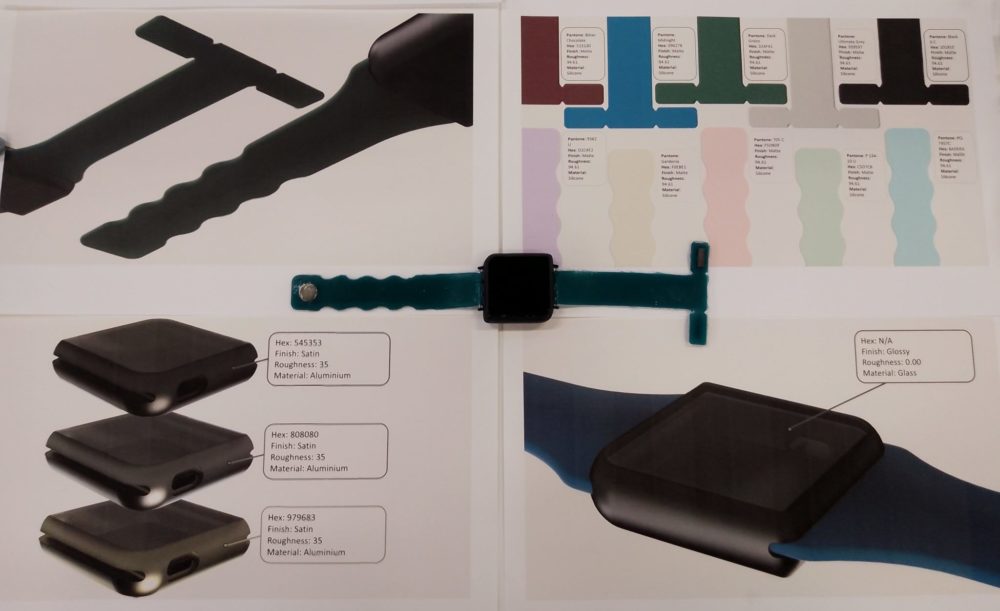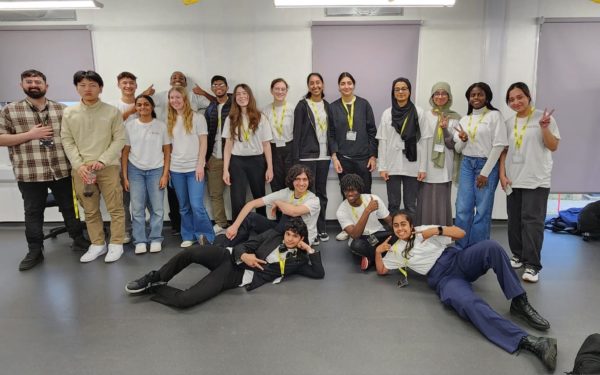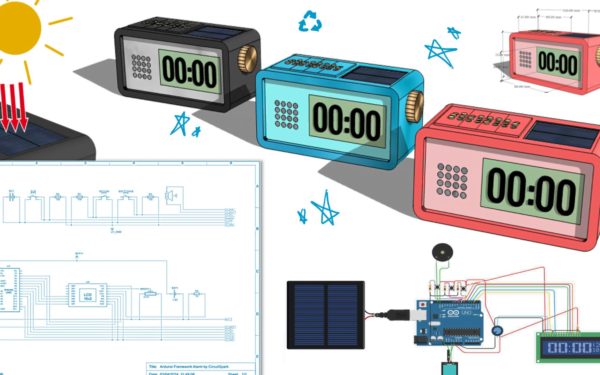
From classroom to catwalk: how can we engineer the next generation of wearable technology?

This term, on their User-Centred Product Design module, second year TEDI-London students looked into the dynamic world of wearable technology, exploring the way it addresses users’ needs in collaboration with Ogle models and prototypes and their Biomedical Engineering peers at King’s College London.
Wearable technology, encompassing everything from fancy smart glasses to life-saving heart monitors, has boomed in the last decade, now making up a global market of $55.5bn. It has revolutionised entertainment, daily productivity, and our safety and well-being.
It’s not surprising then that the need for wearable technology that addresses the real needs of users is set to grow in the next ten years. And as the engineers of the future, our students were tasked with designing an innovative wearable technology product centred on improving the experience of the user.
THE DESIGN BRIEF: WEARABLE TECH SOLUTIONS
Our students were tasked to create a working wearable tech prototype for a company of their choosing, ranging from IKEA to SONY, focusing on the physical and aesthetic quality of the product. To start with, they had to gain an understanding of the world of wearable tech and find inspiration from some of its most recent developments.
“One fascinating example that came up during the project” explained module leaders Dr Sam Fishlock and Dr Matt Thompson “is the ‘humane AI pin‘ – which is, in some ways, a smartphone without a screen. This tied in well to some of the new ideation techniques that we were learning.”
This project also saw our students collaborating with industry partners and their King’s College London peers. Ogle Models taught students how to prototype and mock-up their ideas, while Biomedical Engineering students from King’s shared their knowledge on circuit design and building a functioning device.
This collaborative effort enabled our students to focus on designing a wearable tech protype that fit the criteria of being beautiful, marketable and centred on their identified users’ needs, they then presented their solutions – ranging from technology to enhance and enable speech, to a wearable device to measure a head impact during a rugby game – at their project showcase.
FIT FOR SPORT
From checking our daily quota of steps to our heartrate after a marathon, wearable tech such as the Fitbit is well established in the world of sport and exercise.
But our students decided to think outside the box and come up with new ideas to improve the experience of users, as well as to promote health and safety. Oliver, who plays rugby with the King’s College London Student Union team, designed a wearable head impact monitoring system which alerts the users of potential concussions, after realising many potentially dangerous head injuries can often go unnoticed during training and matches.
Alexander and Finlay, who both have fond memories of skiing in the French alps, came up with smart ski goggle protypes to provide the user with an easy way to listen to music, send and receive calls, record their feats, and reach SOS easily in an emergency. This way ski-enthusiasts can push to new limits without putting themselves at risk or needing to carry fragile phones to keep track of their data.
Lei Anne’s watch ‘The Reno’ takes a step beyond conventional smartwatches by guiding hikers along the right path using ambient lights, eliminating distracting screens and allowing users to appreciate the landscape without risking their safety.
SMART HEALTH
Technology has revolutionised the way we monitor our health. Just think of how glucose levels monitors have improved: Chunky machines have given ways to smartwatches that send regular alert without the user having to prick their finger, making it easier and painless to manage their diabetes.
Our students drew inspiration from this philosophy to create innovative prototypes focused on stylish and comfortable wearables. Ishaaq’s ‘Pulse Oximeter’ ring, functioning as jewellery, monitors blood oxygen and heart rate, automatically notifying the hospital if levels become dangerously low. Georgina’s ‘Y Strap’ meanwhile replaces uncomfortable ECG machines by simply placing a silicone strap on the back of the neck, allowing hospital staff to monitor vitals on a separate screen via Bluetooth.
Randeep’s ‘Philosophical’ watch serves as a pill organizer, sending reminders for medication schedules and indicating which pills to take. While Shaheba’s ‘Midwatch’ promotes mental well-being by suggesting fitness exercises and tracking hydration and sleep stats. If the user has a panic attack, the watch is also designed to detect them and send calming vibrations to the nervous system.
TRENDS THAT WORK
TEDI-London students have also engineered new solutions to help users work better and faster. Omar’s ‘Smarter Timing’ watch helps people to manage their schedule without messing around with smartphones and by retaining the timeless design of a dress watch. His prototype also gamifies tasks to encourage the wearer to complete their goals.
Emily’s ‘Belåtenhet’ unites the elegant simplicity of Nordic design with cutting edge technology, providing noise cancelling headphones and a drop-down visor for the user to easily view schematics. Embracing IKEA’s value of simplicity and convenience, her modular design also makes sure it can be comfortably worn by glasses wearers.
Our students considered a whole host of careers where wearable tech can help the user: Nicholas’ ‘Smart-Arm’ was designed to deliver soldiers live mission essentials straight on their arm. Displaying live maps, stats, as well as mission critical orders to keep soldiers tactically aware while also reducing the load of equipment they need to carry.
Their wearable tech also addresses commuter needs: From Lorenzo’s ‘Pearl Band’ to effortlessly tap and dash across London’s public transport, to Amber’s smart gloves designed for cyclists to be able to brake and indicate without having to remove their hands from the handlebars.
INCLUSIVE DESIGN
In the realm of wearable tech, where convenience and style intersect, some students designed wearables to alleviate stress and offer inclusive solutions. Umar’s Key Ring automatically opens and locks doors, eliminating concerns about losing keys. Zainab’s ‘SPIN’, a fidget bracelet conceived to ease stress and anxiety, particularly for users with autism and ADHD, doubles as a charger. And for visually-impaired users, Anri’s smart watch tells the time in brail.
The diverse backgrounds and interests of our students enabled them to create solutions transcending utility. Sinem’s ‘Edge Of Construct’ augmented reality glasses enhances users’ interactive experiences with artifacts at museums like the V&A. With elements of paintings spilling beyond frames and historical characters sharing stories on guided trails, it truly embodies a beautiful and delightful wearable device.
This showcase was a great opportunity for students to present their prototypes to industry partners, TEDI-London staff, and their peers. Speaking to Oliver and Emily about the showcase, they shared:
“Being able to celebrate the completion of this module together, and share ideas and solutions helped us to feel like we belong to an inclusive and supportive community, where we can combine our engineering skills and daring vision. Seeing each other’s work has been really helpful and we are already thinking of projects we can work together on next!”
Keen to work on projects like this one? Find out more about our Global Design Engineering degree and how to apply.
More Events articles


Secondary school students take part in Design Engineering Week
